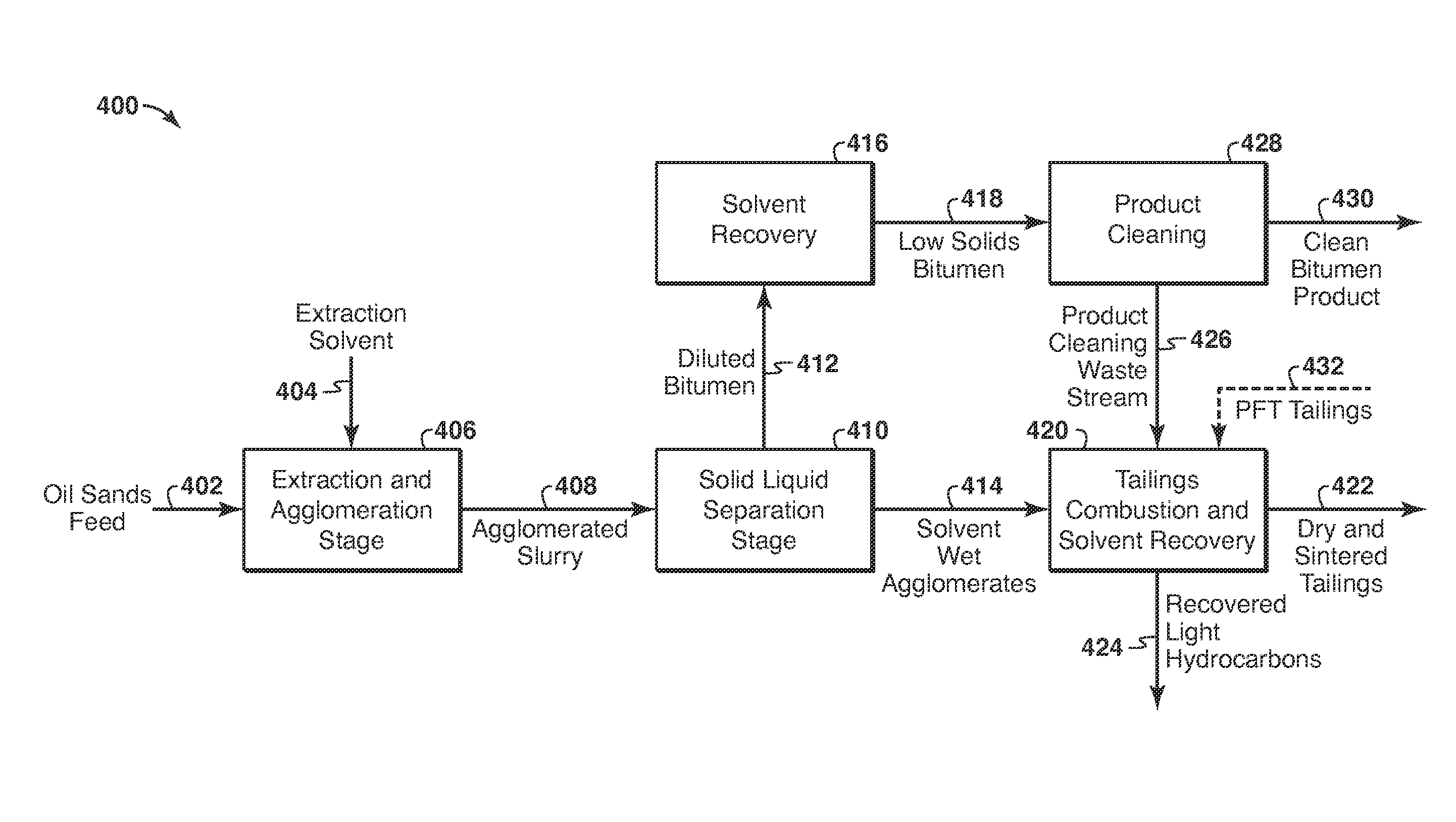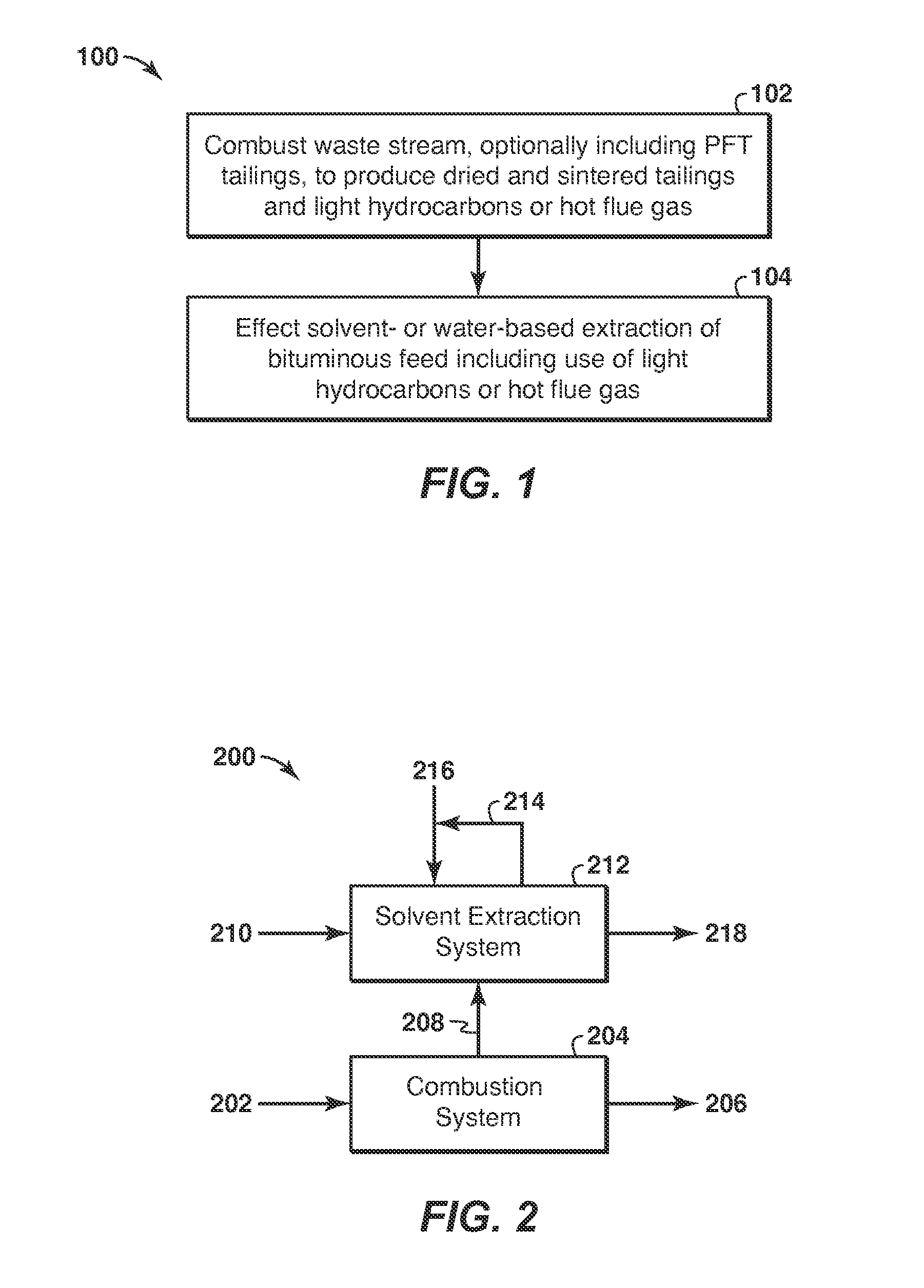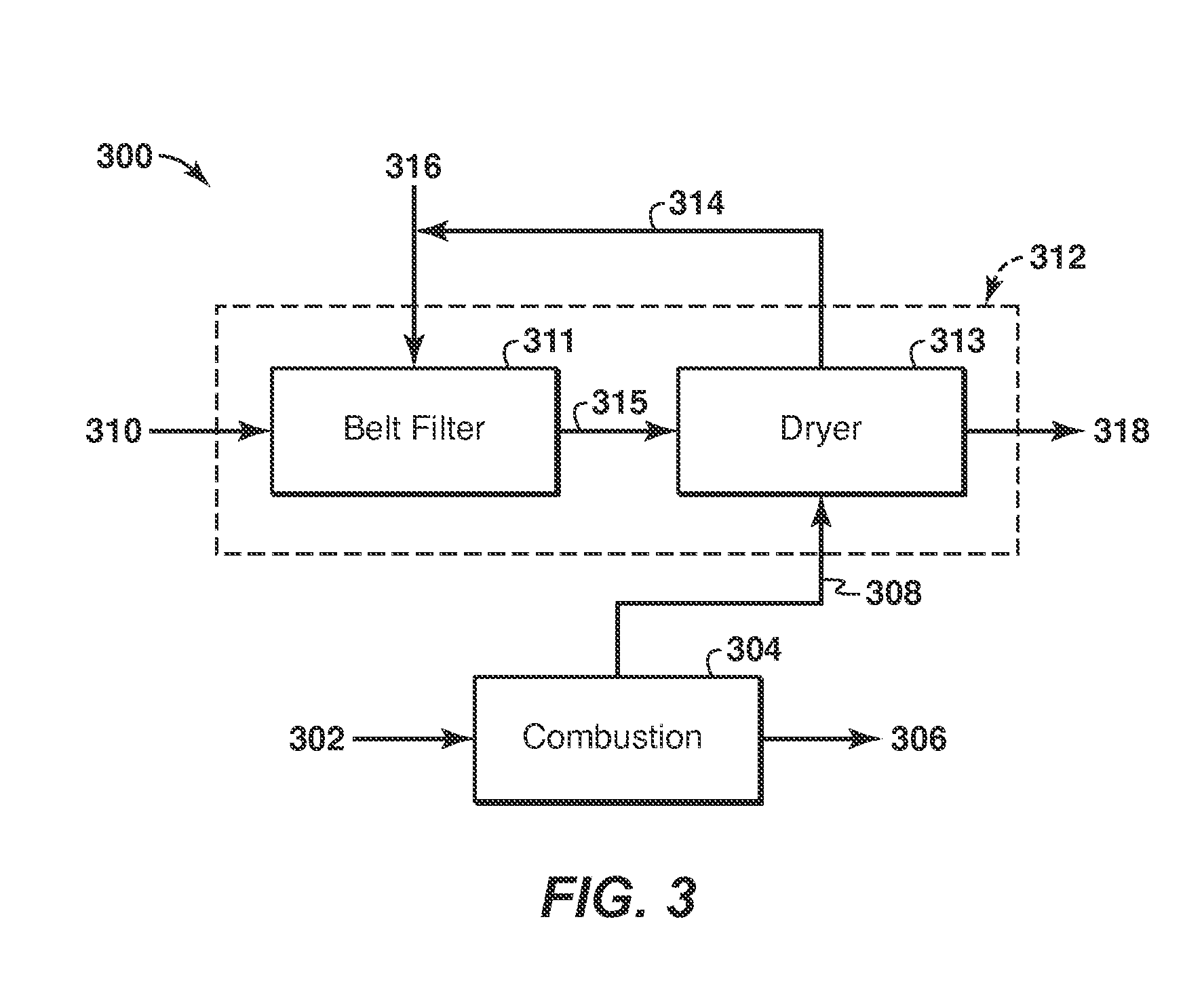Solvent Extraction of Bitumen Using Heat From Combustion of Product Cleaning Streams
a technology of solution extraction and product cleaning, which is applied in the direction of solid fuel combustion, combustion types, lighting and heating apparatus, etc., can solve the problems of large amount of time required for most of the solid materials, wet tailings, and unsatisfactory handling methods of pft tailings
- Summary
- Abstract
- Description
- Claims
- Application Information
AI Technical Summary
Benefits of technology
Problems solved by technology
Method used
Image
Examples
Embodiment Construction
[0036]The process described herein utilizes heat generated from the combustion of product cleaning waste streams within the solvent-based extraction process. Product cleaning waste streams are produced from the cleaning of solvent extracted bitumen or from treatment of bitumen froth produced in a water-based extraction process. Product cleaning waste streams containing a sufficient amount of hydrocarbon can be mixed with solvent wet tailings and combusted to produce heat that can be used within the solvent-based extraction process or water-based extraction process. Additionally, the solids resulting from the combustion process may be heat-treated to a sufficient degree to render them more suitable for construction material and other uses known in the art.
[0037]Solvent extraction of bitumen generally involves combining solvent with a bituminous feed to produce a bitumen product. Solvent is recovered and may be re-used. Heat may be used in solvent recovery by various methods. For exam...
PUM
 Login to View More
Login to View More Abstract
Description
Claims
Application Information
 Login to View More
Login to View More - R&D
- Intellectual Property
- Life Sciences
- Materials
- Tech Scout
- Unparalleled Data Quality
- Higher Quality Content
- 60% Fewer Hallucinations
Browse by: Latest US Patents, China's latest patents, Technical Efficacy Thesaurus, Application Domain, Technology Topic, Popular Technical Reports.
© 2025 PatSnap. All rights reserved.Legal|Privacy policy|Modern Slavery Act Transparency Statement|Sitemap|About US| Contact US: help@patsnap.com



